. . . and not on an ICF house.
There is a builder in the area that uses what he calls the “miracle wall” system. I don’t know if this is that builder, but this is the general system: 2×4 studs, let-in angle bracing, osb or ply at the corners (maybe?), XPS sheathing. I am not sure if the standard or deluxe wall system then adds in corbond-type foam or just batts at insulation stage.
In any event, we had a wind event a week or so ago and this is what happened: (see pic)
In 1 or 2 days, pieces were taped back in and the siding was racing up that face to cover the odd tape lines.
Does this process/repair change the wall structure/safety appreciably? Probably not. Is it an energy efficient wall system? Probably.
However, something doesn’t sit right with me on a house that you can break into with a pocket knife and a swift kick to the backside of the drywall.
Adventures in Home Building
An online journal covering the preparation and construction of our new home.
Edited 10/8/2006 9:30 am by jhausch
Edited 10/8/2006 9:31 am by jhausch
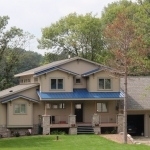

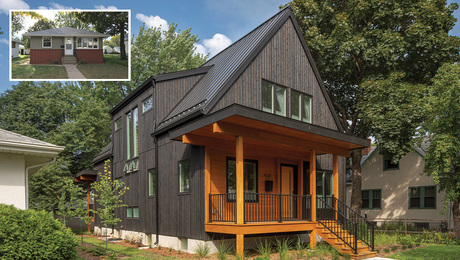
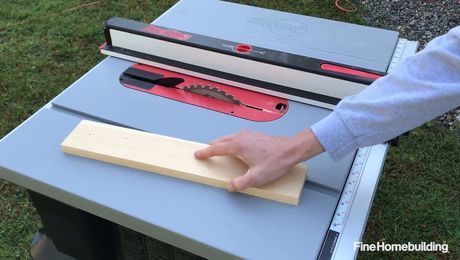
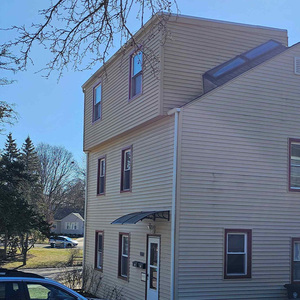
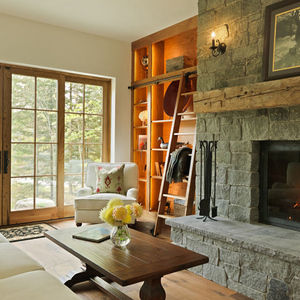
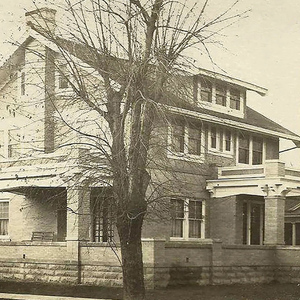
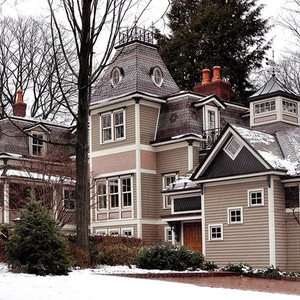







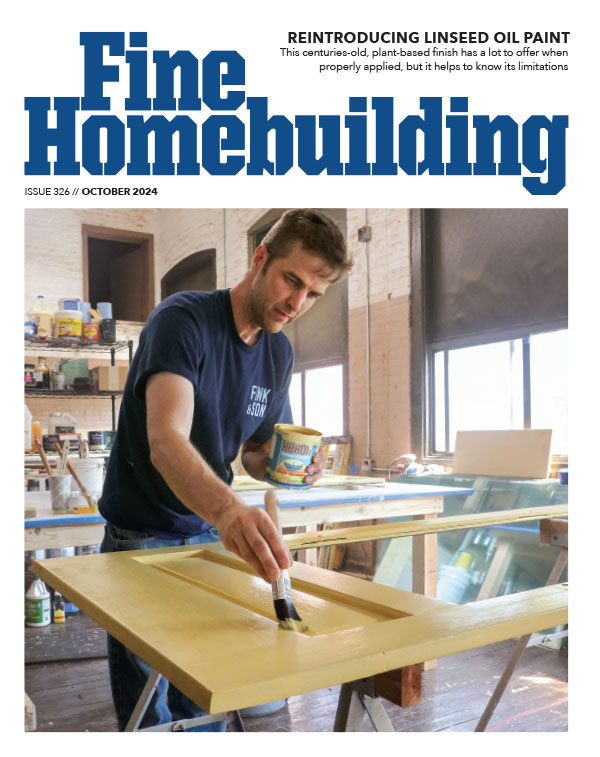





Replies
To me it just looked like foam board or house wrap. Maybe not. At any rate not long ago here in Mobile all that was required was ply or OSB on the corners and then house wrap over foam board then siding. Now due to new hurricane codes we have to ply or OSB the entire exterior then wrap. I am like you. If one was to put vinyl or some other flimsy exterior surface you could literally use a box cutter to get into the house the way we used to do it.
Semper Fi
Edited 10/8/2006 9:40 am ET by Jarhead
Yep, just studs and XPS (foam board).
PS - interesting "admission?": "use a box cutter to get into the house the way we used to do it." :-o
http://jhausch.blogspot.comAdventures in Home BuildingAn online journal covering the preparation and construction of our new home.
Scary...
I would think that an exterior sheeting with plywood or whatever would be mandatory to give the house some stiffness. Externally-applied XPS won't, and relying on the exterior trim to do that work shouldn't work either... that's not what it was designed to do.
Is there an inspector or something equivalent in your county? Might be a good idea to run the picture past them to see what their reaction is...
You can just make out the diagonal let-in bracing. That is the racking resistance.
Yes, we have inspectors. This is Wisconsin, USA. We "love" rules and regulations.
We are, I think, one of two states that still has its own building code and does not use ammended versions of IRC or UBC. I think it's us and NY*.
*(sorry if that is incorrect, I am repeating what I've heard on this one. I do know that we have our own code, the comment on NY and us being the only two is not a fully vetted comment.)
http://jhausch.blogspot.comAdventures in Home BuildingAn online journal covering the preparation and construction of our new home.
Edited 10/8/2006 9:51 am by jhausch
Here in MA we still have our own code as well.
Back on topic.... that sort of construction is just plain scary to me. One good wind storm with a falling tree brushing up to the house could pretty much 'total' the house. Geez, as kids we'd hit foul balls..... if we played in that neighborhood we'd have to go in their living room to get the ball back!View Image
First, I don't condone this type of construction in any way, shape or fashion.
That said, provided that the subject area is not in a high wind zone or seismic zone, this type of construction would meet the requirements of many if not most model building codes.
A common code requirement example is a structural panel on each side of each corner and a structural panel every 25' for long straight walls. Diagonal bracing can be substituted for structural panels. Again, not acceptable in high wind or seismic zones.
Several years ago there was an article in, I think, the Journal of Light Construction by a licensed PE discussing bracing against racking. He quoted design codes and standards about the amount of racking various methods were rated for. Let-in diagonal bracing is considerably, not merely a little bit, weaker than plywood or OSB nailed on as sheets. In many configurations let-in bracing was not much better than nothing at all. I concluded from the data that I would never build with let-in bracing.
Bingo!It is also the reason why the various forms of ICF rely on rebar and concrete for strengh. SIPs also feature plywood on the outside and inside for that very reason. Something has to hold it all together. The house shown by the OP is likely to be very, very loose and shakey in any kind of wind.
@@ Let in bracing
Done the old-fashioned way. We demoed an apartment complex that had let-in braces at each corner and a transverse one in each bathroom. With the DW and siding off, you could rock the building by hand.
This was in Costa Mesa, CA, before the modern codes.
Quakes, hurricanes, tornadoes - you really want full OSB sheating.
Of course, the blue board is a lot cheaper. "More money, more money, more money!!"The ToolBear
"Never met a man who couldn't teach me something." Anon.
I did some low-voltage work on a condo in Pewaukee that was built the same way and I was amazed that it would pass. What a bunch of crap! I found out how it was built when I was driiling a hole for one of the outside speakers and once the bit was through the vinyl siding, it just went right into the room (the drywall had been removed for the sliding door installation and I was about a foot away). I guess that in the case of the condo, the interior walls that are parallel to the outside walls are being used for added resistance to racking. Those and the drywall they used- I have never seen any like it before. It was really hard, not like regular drywall.
I wonder who'll accept the design award for that one.
>>Does this process/repair change the wall structure/safety appreciably? Probably not. Is it an energy efficient wall system? Probably.<<
If they're loosing the structural integrity of the house for energy efficiency, than that to me is a joke!
Let's see, do I want a house that you can break into with a pocket knife and save on energy, and when a heavy wind blows it falls apart or do I want a house that you can't break into with a pocket knife and will stand up with the wind.......HMMMMM?. Heavy decision here........
What is a "Miracle Wall System" and XPS sheathing anyway?
Joe Carola
Edited 10/8/2006 11:58 am ET by Framer
XPS is Extruded Polystyrene. Blue and Pink foam board.
EPS is Expanded Polystyrene. The stuff in SIPs, cheap coolers, and coffee cups.
Miracle Wall System is a proprietary name that a local builder uses. I think that it is also known as the Dow Intelligent Wall System.
I guess what I was saying was that the wall system propbably meets or exceeds all applicable minimums for strength and energy efficiency. I just feel more comfortable exceeding those minimums.
I am not defending this system. I just think it is similar to the approach an automotive manufacturer makes trying to use the thinnest gauge of metal possible where practical. Such is big business, I suppose.
Also, note the roof overhangs (or lack thereof) Probably another expense saver. This design may lean towards the colonial. A style that does not have large overhangs, but most of his designs have the minimal overhangs.
http://jhausch.blogspot.comAdventures in Home BuildingAn online journal covering the preparation and construction of our new home.
Edited 10/8/2006 2:43 pm by jhausch
Don't know if it is the same or not, but here is a link that turned up with a search:
http://www.miracle-homes.com/4_4.html
no comment
is your use of "miracle wall system" indicative of the builder's name?
maybe ;-)
LIke I said, I don't know if this is one of his homes, but his system is similar.
I suppose filling the walls with corbond would further increase stiffness,. but I think it's only recently that this builder made the corbond standard and not the upgrade over batts.
http://jhausch.blogspot.comAdventures in Home BuildingAn online journal covering the preparation and construction of our new home.
what's the "miracle" part? that the house is still standing?
And I love that design. Looks like nothing more than a cube with a roof.
"When asked if you can do something, tell'em "Why certainly I can", then get busy and find a way to do it." T. Roosevelt
Early Borg
or
Rustic Borg
Resistance (to wind) is futile.
http://jhausch.blogspot.comAdventures in Home BuildingAn online journal covering the preparation and construction of our new home.
Edited 10/8/2006 2:45 pm by jhausch
By the way, you think they took the time to go around and put new nails in any of the XPS boards the didn't not blow off to tighten things up?
Nah, that's what siding nails are for ;-)
http://jhausch.blogspot.comAdventures in Home BuildingAn online journal covering the preparation and construction of our new home.
I thought when xps sheathing was used it was required to have ply at the corners. Seems like i remember a FHB article about that very type of construction and it basically endorsed the process. That was several (~10) years ago and they certainly weren't sheathing with 100% xps.
Tom
Douglasville, GA
I was framing in the 80's in Pa. We sawed a kerf for the metal braces from plate to plate, shot in a few 8ds with the gun, sheathed the whole thing with 1/2" foil/polyiso/foil board.
Some yrs later we were informed we needed a "200mph Corner" ( wind load) and switched to 1/2 ply on te corners, foil foam the rest.
Those were acceptable there, then, I dunno about now.
Spheramid Enterprises Architectural Woodworks
" If ya plan to face tomorrow, do it soon"
Think it'd be ok to build a shed this way?The end move in politics is always to pick up a gun. R. Buckminster Fuller
Depends. How windy do it get? I mosty opt for T-111 for sheds, but a metal rack brace and foam is fine if the loads from wind and possible twisting from heavy snow load are not excessive.
You can also just lay a 1x4 across the studs on a diag. from plate to plate and let it in, if ya have 1x4 laying around, it don't have to be the "T" shaped metal rack brace.
Be off to get a planer...hehehehhe.
Spheramid Enterprises Architectural Woodworks
I have irriatable Vowel syndrome.
Dow Chemical donated a tractor trailer load of that stuff to the local HfH Chapter with the promise of more if we wanted it. We built one ranch house with it - DE required 4' ply/OSB at corners and around windows and doors - had to pass the opening by 16". This resulted in 1/2" OSB around openings, and at corners, covered with 1/2" foam board, any place where OSB was not required got 1" foam board.
The stuff was so cheesey to work with that the HfH Chapter swore it off forever. That says something when a budget conscious organization will not use a product which they can get for free.
Jim
Never underestimate the value of a sharp pencil or good light.
The stuff was so cheesey to work with that the HfH Chapter swore it off forever. That says something when a budget conscious organization will not use a product which they can get for free.
The HFH that I did work for was offered a home or two built by the local trac-home builder as long as they could build by there standards, HFH turned them down........ And it was because of the sheeting issue that this thread is about. Same as what your saying.
Doug
All you guys keep referring to "all you need is a pocket knife to get in", hell I'd bet I can get in just as quick as you can if I left my pocket knife at home!
I used to trim some trac homes out that were built the same way. One day I was in the finished house and a storm came up, hell you could feel the walls moving in and out just like a chest/stomach on a person breathing!
I never seen it but I heard of a guy that had one of the houses that I'm referring to that lived out on a golf course, open space for the wind to get up to full speed. Apparently on one windy day his big window facing the golf course was moving in and out so much that he got scared and braced it at the mull with a few 2 X 4's, that's a nice look in your living room!
Doug
I don't like it either.
But I have a friend who builds 100 or so houses a year this way - starter homes, limited floorplans etc. Metal x strapping on the corners iirc.
He has housed a lot of the local rural folks on 1 acre lots for not a lot of $$, has been in business 50 years or so.
He has told me that it is more than strong enough, and that 2x4 walls cannot meet energy codes without foam on them. Garages get OSB since they are generally not insulated (at least at first)
He is an honest man with a vision to provide affordable housing, not make a quick buck or build substandard, and I know he's done his homework.
Its not fine homebuilding, but it serves a purpose.
I am torn on this issue. I don't like it, but I am not advocating that these builders must stop using this method.
As stated previously, such a method surely meets all applicable minimums of structural integrity and insulation. I see your point and that of your friend. Further, 100 homes a year is nothing to sneeze at.
However, may I counter with this - perhaps those people are just buying more home than they can afford. Is it really "affordable" to build an almost-disposable house with a 30 year mortgage? The most likely truth of the matter is that the buyers of these homes probably don't know what they are buying, nor do they care. The property appraises at par.
It could also be said that builders using this method are able to offer a lower price and make an equal or greater profit margin than their competitors. Builders not using this method, dealing with the same demographic, may make a lesser margin to meet the same market with a (potentially) superior product.
These homes may stand "forever", or there may be (heaven forbid) a terrible accident or break-in that shines a media spotlight on this method. If there is a neighborhood of homes built this way, I'd hate to live there as the property values tanked right there on prime-time TV.
Hear hear!All too often, the attempt is made to live beyond one's means. Look to the average debt burden of an American, the debts being racked up by the local, state, and federal governments. Building flimsy homes that may remain standing up for years is not the answer in my book.
This construction technique is very common in Canada. There are people who are proud of it because of its advantages in energy conservation if detailed correctly. They call it R2000.
Personally, after working on some we built like this in the 80"s and early 90's, I got into ICF's.
When you get up on the roof of one of these houses and feel it swaying under you because of the movement of the crew shingling, you might have second thoughts about the structure. That's only if the very idea of it didn't fill you with scorn in the first place.
When the place is finished and the "structural drywall" is in place, you can still carry on a conversation between inside and outside by raising your voice only a little.
Flimsy crap. Twenty year houses with twenty-five year mortgages. Long term job security for renovators and repairers. Home construction planned for the lifespan of a house cat.
On the other hand, I am constantly amazed every time the wind blows at how many of them don't fall down.
Ron
Could you clarify how R2000 forbids the use of external plywood sheathing?I would like to think that the main thrust of R2000 was about moving the insulation out of the wall cavity, applying XPS or whatever to the outside 'wall' surface and clapboarding/stucco'ing over that. EIFS and similar construction techniques do not, IIRC, forbid the use of exterior plywood sheathing on the 2x4's. So is it something particular to R2000 that mandates hard drywall on the inside and nothing on the outside in terms of sheathing?Skipping exterior sheathing seems like the wrong place to save money. I'd rather have a plainer interior that I can embellish later than a house that will turn into a teardown.
Constantin,
I'm no expert on R2000. I am not a certified R2000 builder and I have never worked for a certified builder. I have worked on houses built in this style. If "Experienced" shows up here, he could answer all your questions as he was involved in the early stages of the R2000 concept 20 years or so ago.
The idea is not to move the insulation out of the wall cavity, but to increase the total amount of insulation and put a lot of effort into air sealing.
There is nothing unusual about the drywall installation except that it ends up being a structural shear panel by default. There is nothing else to do that job.
As I understand it, R2000 is more a standard of insulation value and air tightness to be attained than it is a set of techniques to attain it. There are commonly accepted ways to meet the standards and the sheet metal braced, XPS sheathed, 2 x 6 stud at 24" seems to be the most common.
I don't think exterior structural sheathing is forbidden. It is just thought to be unneccessary in that you can almost always get your final payment before the house begins to fall apart.
Ron
"......more than strong enough, and that 2x4 walls cannot meet energy codes without foam on them."
Energy code must be tougher in Western MD than northern DE as all of the houses built by local HFH, not only pass our energy code requirements but are tight enough to be (and are) Energy Star certified. 2x4 walls, OSB or ply sheathing, FG batt insulation in the stud cavities. Homes built in the suburbs get 1/2" OSB, homes built within the City of Wilmington are 5/8" fire resistant plywood (pricey but required - 45 minute fire rating on this ply; then 5/8" drywall on the inside).
By the time HFH deducts the labor (free - volunteers), OSB is cheaper to use, if you have to buy it - based strictly on the purchase price of foam vs OSB.
Perhaps the motivation for your friend is the cost of installation labor - foam is faster by far due to the foam being cut with a knife rather than a saw. This would probably lower the total cost of the home to the builder which should be reflected in the selling price of affordable housing.
FYI the 1" Dow foam which DOW was willing to donate by the truck load was rated at R-5.0; 1/2" used on top of 1/2" OSB at corners was R-2.5.
Jim
Never underestimate the value of a sharp pencil or good light.
I cannot speak for his motivation, but we are doing an HFH type project for a local family with a kid with cancer - I called about using his panels and the options were 2x6 w/OSB or 2x4 w/foam. Energy codes were the reason given.
I personally would like 2x6, osb, and thinner foam staggered to make the house "tight" like you mentioned. Or SIPs or ICFs.
Treat every person you meet like you will know them the rest of your life - you just might!
I would have to see it up close to really understand the wall problem but it doesn't look all that good from the pictures. Another question I have is the location/position of the electrical service panel on the side of the house. The panel looks as though it's going to be located on the second floor, about 8 to 10 feet above grade. What's with that?
Optical Delusion -
the silt fence hides the rising grade behind it
The Meter Post will place the meter about 3' above grade, the SE cable inside will come into the walkout basement level near the ceiling and then down into the panel inside (I assume)
http://jhausch.blogspot.comAdventures in Home BuildingAn online journal covering the preparation and construction of our new home.
It looks cheap, and it is cheap. "Early Borg," indeed. The zero overhang house has no soul, IMO, and they also tend to suffer more from bulk water entry problems.
The incremental cost to do solid shearwall sheathing, then XPS over that is a tiny portion of the overall cost, but would make a huge difference to the strength, quiet, and repairability of the place as it ages.
Welcome to the disposable society. I can see why RonB went to ICF's after seeing this trend in stick-built housing. Guys like Mike Smith prove that a frame house can be done right and have a life expectancy of centuries with reasonable maintenance.
Places like the one in the picture won't get proper maintenance for long, because they lack the life energy for anybody to care about. The cost-cutting mentality that goes into the initial build is bound up in the structure, ensuring its premature demise.
And there is nothing wrong with XPS sheathing, either, so long as the house also has real structure to back it up. It does not save energy if the whole house has to be landfilled in a decade or two.
Bill
Edited to replace sip's with ICF's. Trying to remember too many posts at once!
Edited 10/9/2006 9:03 pm by BillBrennen
10-15 years ago I was seeing a lot of homes built like that around here -- foam sheathing and then plastic siding. Basically, if you wanted to get into the house you could simply kick your way through a wall.
Haven't seen it for a few years, though. I suspect local codes now don't permit it, plus it's a PITA to hang plastic siding without nailable sheathing.